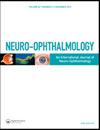皮肤美白产品中汞引起的毒性视神经病变
IF 0.8
Q4 CLINICAL NEUROLOGY
引用次数: 0
摘要
摘要汞被认为存在于日常生活用品中,如肥皂、美白面霜(SLC)和局部消毒剂。据报道,接触汞会对视神经和视网膜造成损害。一名30岁的索马里妇女表现为视力下降,并被发现有双侧视神经萎缩。进行了营养缺乏、重金属和梅毒的神经影像学和实验室检查。评估显示神经影像学和实验室检查正常,除了血清和尿汞水平升高。首次血液检测时汞含量为11.1微克/升(正常限值< 10.0微克/升),重复检测时为15.7微克/升。24小时尿检显示汞升高至16 ug/24小时(正常范围< 2 ug/24小时)。她使用的未标记SLC评估显示存在汞。在双侧视神经萎缩的检查中,有必要进行重金属检测。临床医生应将化妆品视为汞暴露的潜在来源,如果含有汞,应建议停用化妆品。关键词:中毒性视神经病变;汞毒性;光学相干断层扫描;视网膜神经纤维层;补充材料这篇文章的补充数据可以在网上访问https://doi.org/10.1080/01658107.2023.2251580.Additional信息基金作者报告没有与这篇文章的工作相关的资金。本文章由计算机程序翻译,如有差异,请以英文原文为准。
Toxic Optic Neuropathy Due to Mercury in Skin Lightening Products
ABSTRACTMercury has been described as been in daily household items such as soaps, skin-lightening creams (SLC), and topical disinfectants. Mercury exposure can reportedly cause damage to the optic nerve and retina. A 30-year-old Somali woman presented with decreased vision and was found to have bilateral optic atrophy. Neuroimaging and laboratory work-up for nutritional deficiencies, heavy metals, and syphilis were performed. Evaluation revealed normal neuroimaging and laboratory work-up except for elevated serum and urine mercury levels. Mercury levels at the initial blood test was 11.1 ug/L (normal limits < 10.0 ug/L) and was 15.7 ug/L on repeat testing. A 24-h urine test showed elevated mercury at 16 ug/24 h (normal limits < 2 ug/24 h). Evaluation of an unlabelled SLC that she was using showed the presence of mercury. It is worth testing for heavy metals in the work-up of bilateral optic atrophy. Clinicians should consider cosmetic products as a potential source of mercury exposure and recommend discontinuation if mercury is present.KEYWORDS: Toxic optic neuropathymercury toxicityoptical coherence tomographyretinal nerve fibre layercosmetic products Disclosure statementNo potential conflict of interest was reported by the authors.Supplementary materialSupplemental data for this article can be accessed online at https://doi.org/10.1080/01658107.2023.2251580.Additional informationFundingThe authors reported there is no funding associated with the work featured in this article.
求助全文
通过发布文献求助,成功后即可免费获取论文全文。
去求助
来源期刊

Neuro-Ophthalmology
医学-临床神经学
CiteScore
1.80
自引率
0.00%
发文量
51
审稿时长
>12 weeks
期刊介绍:
Neuro-Ophthalmology publishes original papers on diagnostic methods in neuro-ophthalmology such as perimetry, neuro-imaging and electro-physiology; on the visual system such as the retina, ocular motor system and the pupil; on neuro-ophthalmic aspects of the orbit; and on related fields such as migraine and ocular manifestations of neurological diseases.
 求助内容:
求助内容: 应助结果提醒方式:
应助结果提醒方式:


